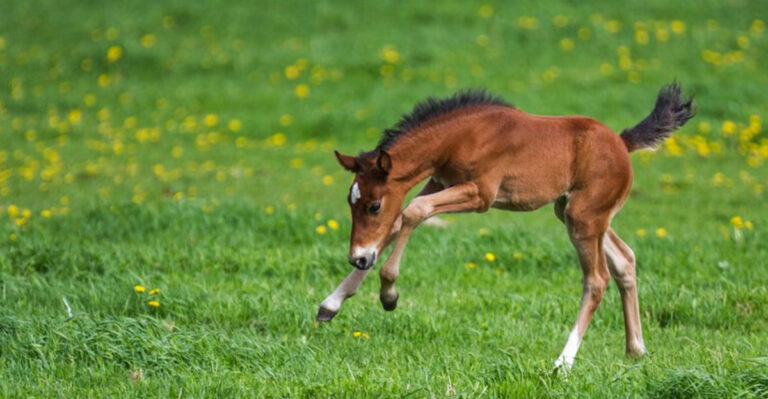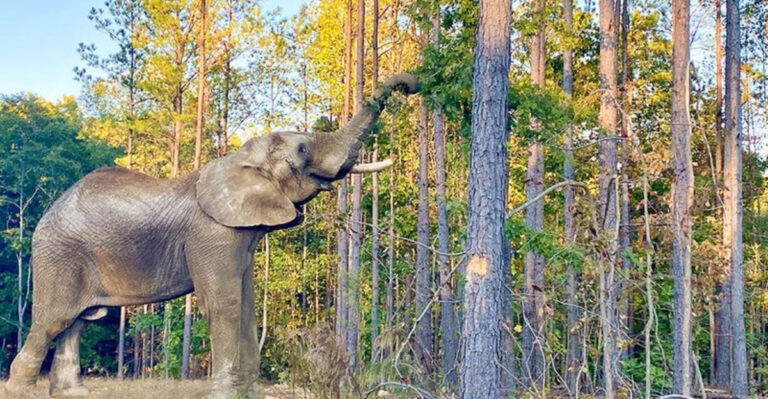Why Birds Often Return To The Same Nesting Site Year After Year
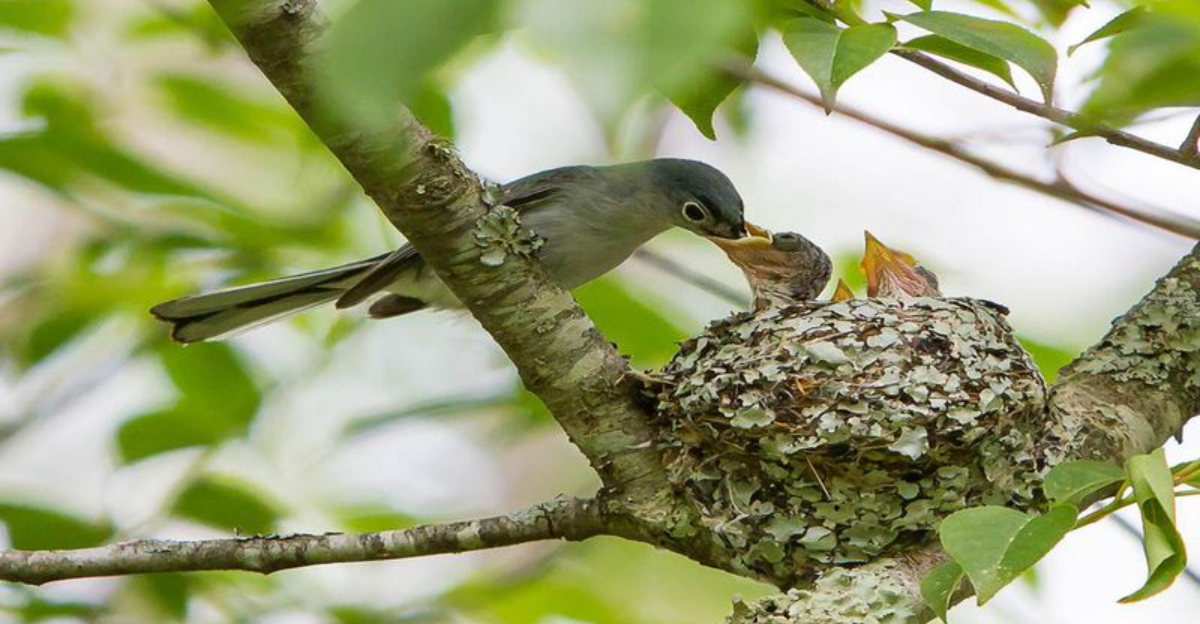
Have you ever noticed birds coming back to build nests in the same spots each spring? It’s like they have their own special addresses!
This fascinating behavior isn’t random – birds have very good reasons for returning to familiar nesting sites.
Their choices are based on survival, comfort, and what worked well for them before. Let’s explore why our feathered friends are such creatures of habit when it comes to choosing their homes.
1. Proven Success Drives Return Visits
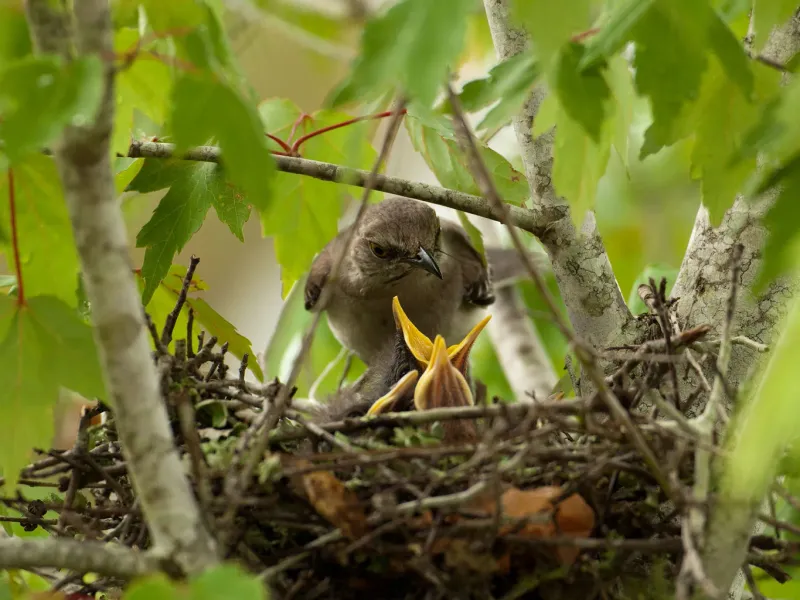
Birds aren’t taking chances with their babies’ lives. If a nesting spot helped them raise healthy chicks before, they’ll likely return. It’s like finding a lucky charm they don’t want to give up!
The numbers back this up too. Studies show birds that successfully raised young in a location have up to 80% higher return rates compared to birds whose nests failed. For them, past success is the best predictor of future results.
Many species can remember exactly which tree branch or roof corner worked well, even after migrating thousands of miles away for months.
2. Safety From Predators
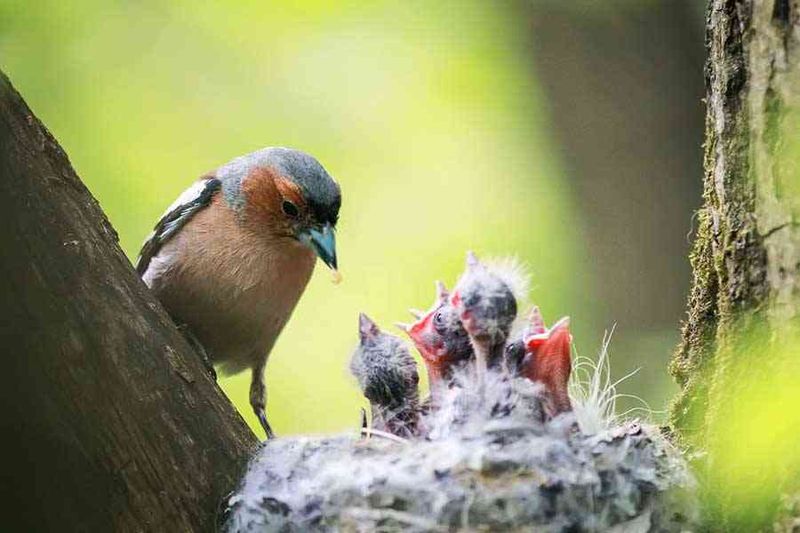
Familiar territories give birds a huge advantage against hungry predators. They’ve mentally mapped every escape route, hiding spot, and danger zone in their home area.
Birds remember which hawks patrol overhead and where snakes tend to climb. They know which bushes provide the best cover and which trees offer the safest branches.
This knowledge doesn’t come easily – it’s earned through seasons of observation and sometimes close calls. Starting over in a new location would mean learning these survival lessons all over again, putting their precious eggs and nestlings at much greater risk.
3. Food Source Reliability
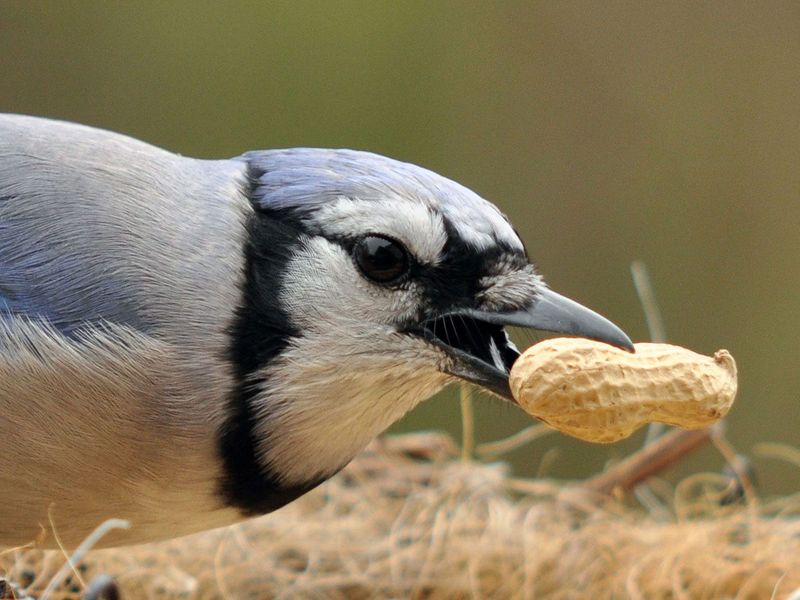
Birds are incredibly smart about food mapping. A nesting site near reliable food sources – like berry bushes, insect-rich meadows, or backyard feeders – becomes extremely valuable real estate.
Parent birds must make hundreds of food-gathering trips daily when feeding hungry chicks. Knowing exactly where to find meals saves crucial energy and time. Many birds even time their nesting to match peak food availability, like when caterpillars emerge.
Experienced birds remember which gardens have pesticide-free insects and which neighborhoods keep their feeders full year-round. This food security makes returning to proven sites worth the journey.
4. Territorial Advantages
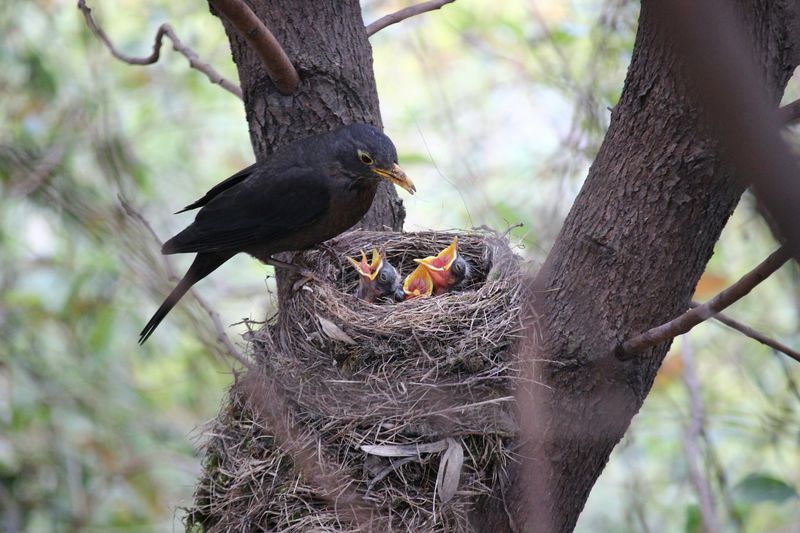
First dibs matter in the bird world! Birds that return early to their previous nesting sites get to claim the prime real estate before newcomers arrive. They’ll vigorously defend these territories against challengers.
Established residents have already proven they can survive in this location. They know the neighborhood well – where to find water, which trees provide morning shade, and which areas flood during rain.
For many species, holding a good territory dramatically increases mating success. Potential mates often judge a bird’s quality by the territory it defends, making familiar home turf worth fighting for each spring.
5. Reduced House-Hunting Stress
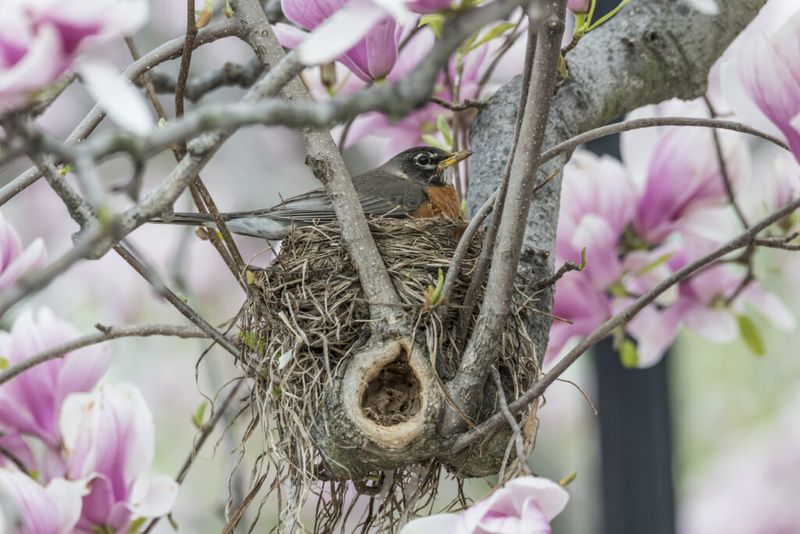
Finding a perfect nest site from scratch takes precious time and energy. Returning birds skip this exhausting search, giving them a head start on breeding.
Spring is already super busy – birds need to establish territories, find mates, and prepare for egg-laying. By eliminating the need to scout new locations, they conserve energy for these other critical tasks.
Researchers have found that birds returning to familiar sites can begin breeding up to two weeks earlier than those forced to relocate. In the bird world, this timing advantage can mean the difference between raising one brood or having time for a second clutch of eggs.
6. Weather-Tested Locations
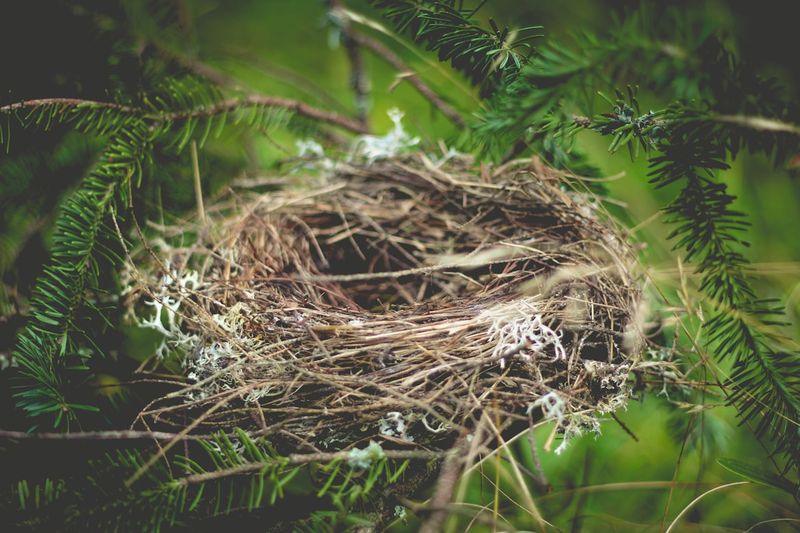
Birds learn which spots stay dry during storms and which offer shelter from harsh winds. A nest that survived last year’s weather extremes has proven its structural soundness.
Some locations provide natural umbrellas – like overhanging rocks or dense evergreen branches – that protect nests from rain and hail. Others might offer cooling shade during heat waves or warmth during cold snaps.
Cavity-nesting birds especially value proven shelters. A woodpecker hole or birdhouse that stayed dry and maintained comfortable temperatures throughout previous seasons becomes incredibly valuable. Climate change makes these weather-tested sites even more important as storms become more unpredictable.
7. Mate Reunion Opportunities
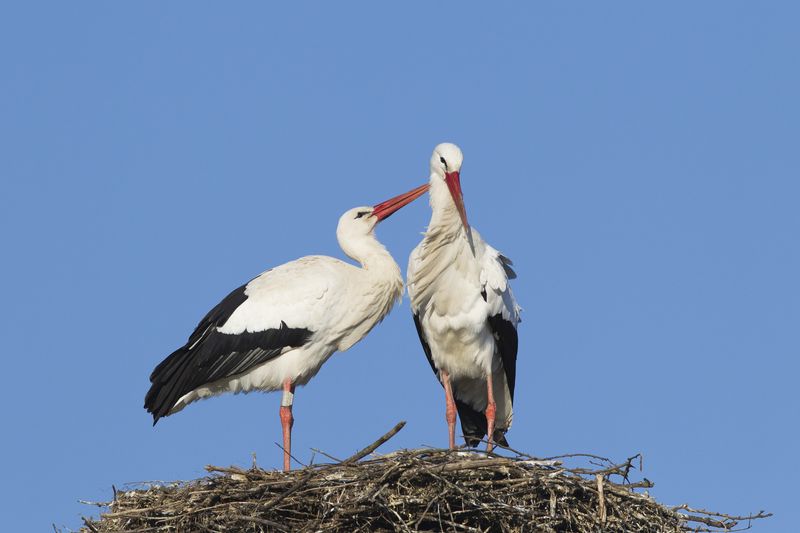
Many bird species form long-term pair bonds, returning to the same breeding grounds to reconnect with last year’s partner. It’s like having a special meeting place that both birds remember!
Finding a new mate takes time and energy. Birds that return to familiar sites can skip the dating scene and get straight to nest-building with a partner they already trust.
For species like geese, swans, and eagles that mate for life, these reunion sites hold special significance. Studies show that established pairs often produce more successful nests than newly formed couples, making the return journey well worth the effort.
8. Nest Reuse Saves Energy
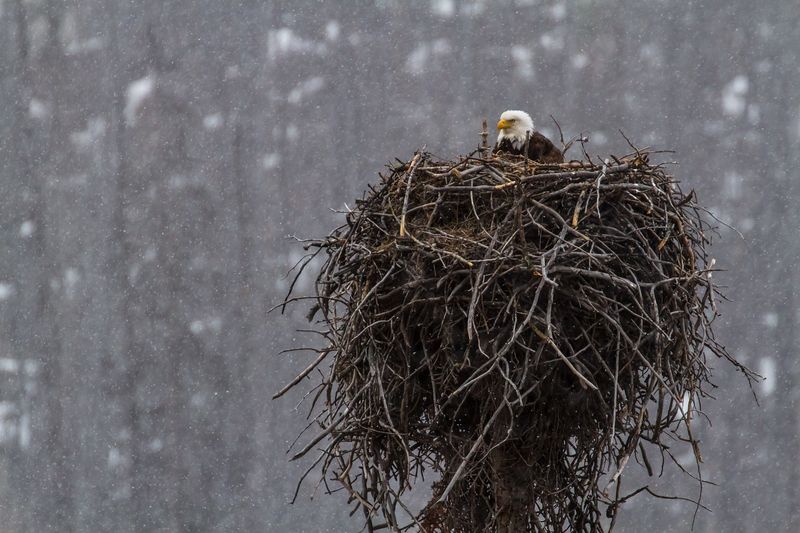
Building a nest from scratch takes tremendous effort! Some birds spend weeks gathering thousands of twigs, grass stems, and lining materials. Returning to reuse or refurbish an existing nest is a huge energy-saver.
Larger birds especially benefit from nest recycling. Bald eagles add to the same nests year after year, creating massive structures weighing up to a ton! Even smaller birds like robins may simply clean out old nests and add fresh lining.
This conservation of energy means birds can start breeding earlier and invest more resources in producing eggs and feeding young. For migrating species already exhausted from long journeys, this efficiency can be crucial to reproductive success.
9. Chemical Familiarity Provides Comfort
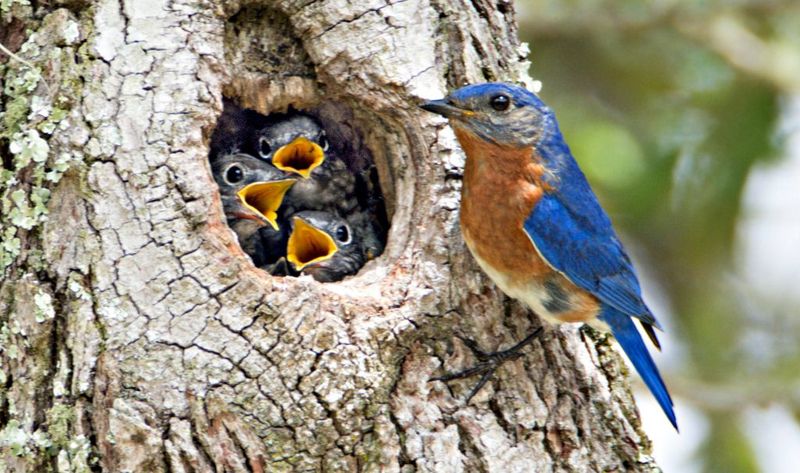
Birds have amazing scent memories associated with successful nesting sites. The familiar smells of their previous home territory create a sense of security and belonging.
Scientists have discovered that many birds can detect subtle chemical cues left behind in old nests. These scents may indicate whether parasites were present or if predators frequently visited the area.
Some species even mark their territories with special scent glands, creating an olfactory map they recognize upon return. While we’ve long underestimated birds’ sense of smell, research now shows these chemical memories play an important role in their homing behavior and site fidelity.
10. Community Knowledge Transfer
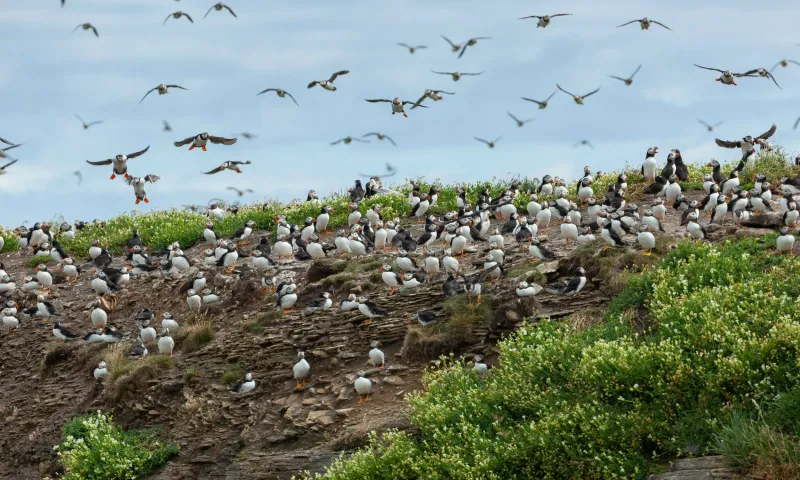
Birds benefit from local wisdom passed through generations in colony nesting sites. Young birds often return to their birth colonies, learning from experienced neighbors about the best techniques for that specific location.
In seabird colonies, this shared knowledge becomes especially valuable. Young birds watch how others handle tricky wind patterns or changing tide conditions that affect fishing success.
Colony sites grow in value over time as this collective wisdom accumulates. Some heron rookeries or penguin colonies have been continuously occupied for decades or even centuries! The social learning that happens in these bird communities creates a powerful reason to return to the same successful locations.
11. Landmark Navigation Systems

Birds develop detailed mental maps of the landscape surrounding their nesting sites. Distinctive trees, buildings, or rock formations serve as navigation landmarks they recognize even after months away.
This remarkable spatial memory helps migrating birds find their way back to exactly the right garden, cliff face, or marsh after journeys spanning continents. Some species can pinpoint nest locations with accuracy down to a few feet!
Researchers studying purple martins found birds returning to the exact same compartment in multi-room birdhouses year after year. This precise navigation ability is especially impressive considering the dramatic landscape changes that might occur during their absence due to human development or natural events.
12. Genetic Programming Encourages Returns
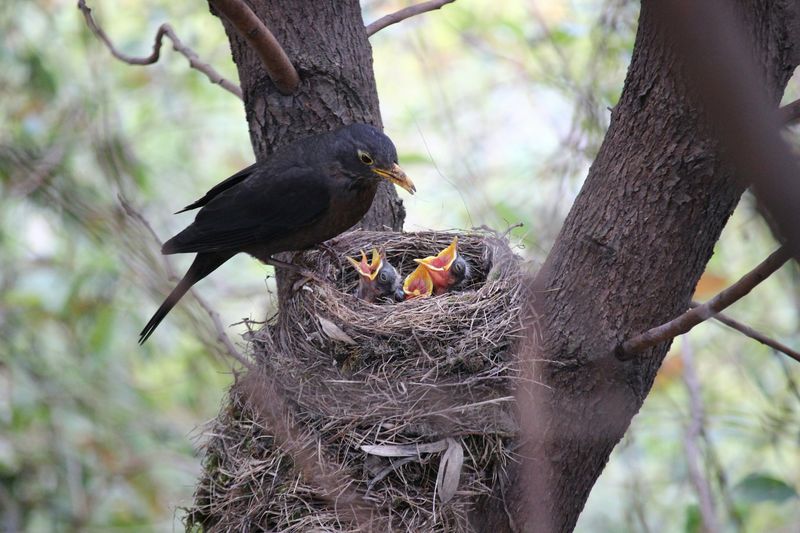
Some birds have a genetic predisposition toward site fidelity. This inherited tendency to return home has been naturally selected because it generally increases survival and reproductive success.
Young birds often imprint on their birth location during critical development periods. This creates a powerful homing instinct that pulls them back to familiar areas as adults.
Scientists studying barn swallows found that certain genetic markers strongly predict whether a bird will return to its birthplace to breed. This biological programming varies between species – some show extreme site fidelity while others are more flexible opportunists. The strength of this genetic tendency often matches how stable or predictable a species’ preferred habitat tends to be.
13. Human Relationships Influence Returns

Birds form surprising connections with humans who provide reliable resources. A porch where people hang hummingbird feeders or a yard with bird-friendly landscaping becomes a trusted location worth returning to.
Some species actively seek human proximity for protection. Barn swallows nesting above doorways and chimney swifts in old chimneys recognize that human structures often deter larger predators.
The consistency of these human-provided benefits matters tremendously. Birds remember which homeowners maintain feeders year-round and which gardens offer pesticide-free insects. This relationship building explains why the same cardinal family might return to your yard for many generations!
14. Cavity Nest Scarcity Drives Returns
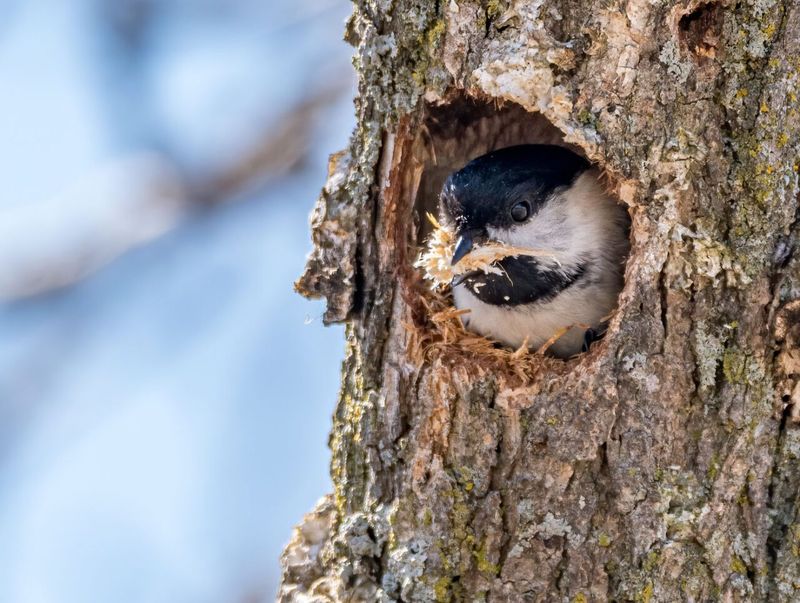
For birds that nest in tree hollows, the housing shortage is real! Natural cavities take years to form and are incredibly valuable real estate in the bird world.
Woodpeckers, bluebirds, and owls face fierce competition for these limited homes. Once a bird finds a good cavity, returning to claim it early each season becomes a survival strategy.
Modern forestry practices that remove dead trees have made this shortage even worse. Some cavity-nesters now return to the same nest holes for 10+ years! This explains why providing birdhouses can dramatically help these species – they’re essentially offering new apartments in a very tight housing market.
15. Microclimate Advantages
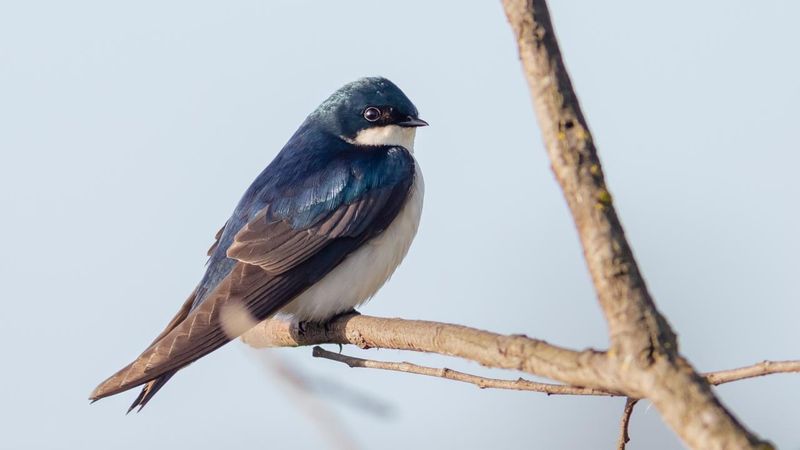
Birds become experts on the tiny weather patterns of their chosen spots. A south-facing cliff that captures morning warmth or a sheltered valley that blocks prevailing winds creates microclimates that can significantly impact nesting success.
These subtle temperature and humidity differences affect everything from egg development to insect availability. Birds remember which nest locations stayed at optimal temperatures during previous breeding seasons.
Climate change makes these microclimate advantages increasingly important. As weather patterns become more extreme, birds that return to sites with natural buffers against temperature swings have better chances of raising healthy young. The perfect microclimate can be worth traveling thousands of miles to return to!


